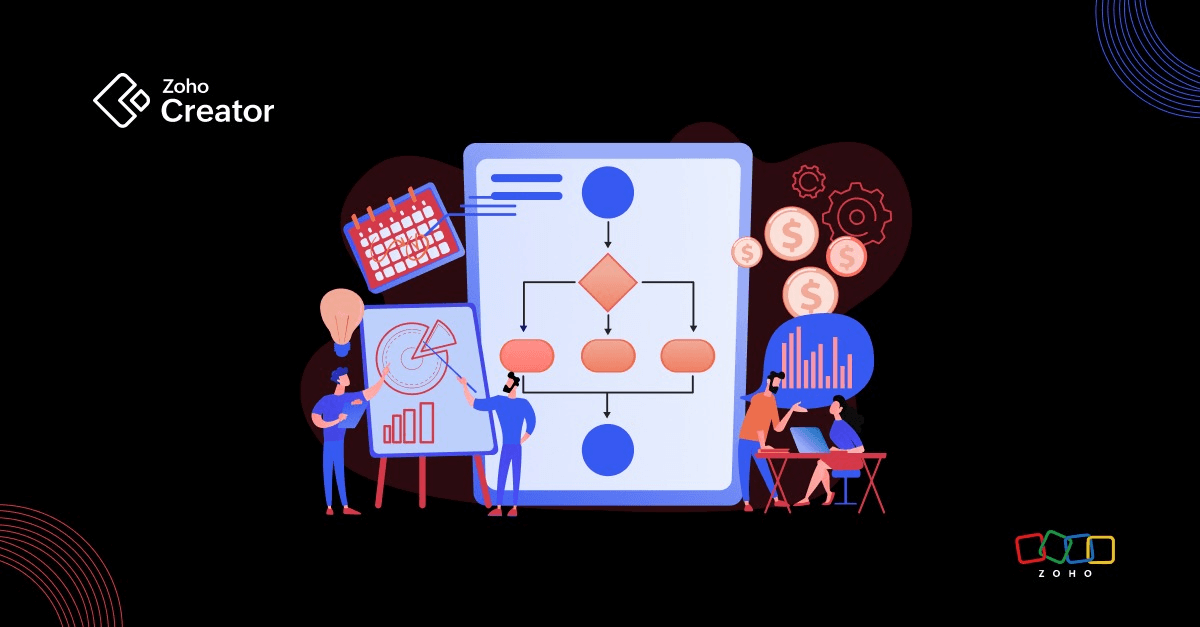- HOME
- Know Your Tech
- 10-step workflow automation to streamline your business processes
10-step workflow automation to streamline your business processes
- Last Updated : October 30, 2025
- 116 Views
- 3 Min Read
Do you lose too much time to repetitive tasks? You’re not alone. Manual processes can sap productivity, increase errors, and frustrate teams. This 10-step checklist gives you a clear, practical path to start automating, refine as you go, and scale with confidence.
Step 1: Define your automation goals
These are examples of common automation goals—you can tailor them to fit your specific business needs.
Shorten approval or processing times.
Improve visibility into your operations.
Clear goals help you measure impact and align your team.
Step 2: Identify processes ready for automation
Find the right candidates. Look for:
Tasks that are repeated daily or weekly
Workflows that are prone to delays or mistakes
Time-consuming, low-value routines
If your team often wonders why a process is still done manually, it’s probably a good candidate for automation.
Step 3: Map out your current workflows
Visualize before you optimize.
Use flowcharts or simple diagrams.
Spot bottlenecks, duplicates, or unnecessary steps.
Clarify hand-offs and dependencies.
Seeing your workflow laid out helps you redesign it more effectively.
Step 4: Gather and organize your data
Clean data equals smooth automation.
Standardize formats.
Eliminate duplicates.
Store data where it’s easy to access.
This step lays the foundation for reliable automation.
Step 5: Research and choose the right automation tools
Select smart tools, not flashy ones. Choose tools that are:
Easy to customize without heavy IT involvement
Scalable as your business grows
Ready to integrate with existing systems
Selecting the right tools upfront sets you up for smoother scaling and long-term success.
According to a McKinsey study, organizations that implement robotic process automation save 20–25 % of processing time on average—a compelling reminder of the efficiency gains possible when you choose the right tools early in your automation journey.
Step 6: Design and build your automated workflows
Think simple and scalable.
Break workflows into clear steps.
Add only necessary logic or conditions.
Design with future growth in mind without over-engineering it.
By keeping your workflows simple and scalable, you make it easier to enhance or expand them later.
Step 7: Test your automated workflows
Run small-scale trials with a limited group before full deployment. This helps you spot issues early and adjust quickly.
Run small-scale trials.
Invite feedback from actual users.
Refine based on real-world use.
This phase helps you uncover and fix gaps before going live.
Step 8: Train your team
Make adoption smooth.
Host hands‑on sessions.
Share simple, easy‑to‑follow guides.
Provide ongoing support channels.
Explain the ‘why’ behind each workflow change so employees understand its value.
Step 9: Monitor and optimize
When everyone’s aligned on purpose, adoption becomes much easier.
Track time saved, error reduction, and turnaround times.
Review performance every quarter—or more often if needed.
Tweak and improve workflows based on insights.
Automation needs continuous attention, not a one‑time setup.
Step 10: Scale your automation efforts
Expand with confidence.
Apply automation where it works next.
Keep core processes consistent.
Stay flexible to adapt as your business evolves.
Success in one department can drive momentum across others.
How Zoho Creator brings these steps to life
Each step relies on a platform that’s flexible, accessible, and scalable. Here’s how Zoho Creator delivers effortlessly and effectively:
Low‑code flexibility: Build and tweak workflows without deep coding skills.
Seamless integrations: Connect with Zoho or third-party tools you already use.
Scalability by design: Start small and grow with ease.
Built for collaboration: Co‑create solutions with other departments.
AI-driven intelligence: Automate smarter with built-in AI features.
In short, it’s not just a checklist—it’s the right framework backed by a platform designed to make each step easier.
Conclusion
Automation isn’t about doing less work; it’s about doing better work. Use this 10-step checklist to reduce inefficiencies, free up time for strategic tasks, and build a scalable, future-ready business.
Ready to make it real?
 Pranesh
PraneshPranesh is a serial entrepreneur and the Founder of Studio 31, a 12 year old, deep tech enabled, wedding photography and film company that has been recognized by many publications for its zero inventory model and unique culture in the unorganised sector.
Zoho Creator has helped Studio 31 redefine its business model by automating over 37 processes and save three hours every single day. He is also a growth consultant for Zoho Creator and helps the team address real-world challenges from a customer's point of view.



